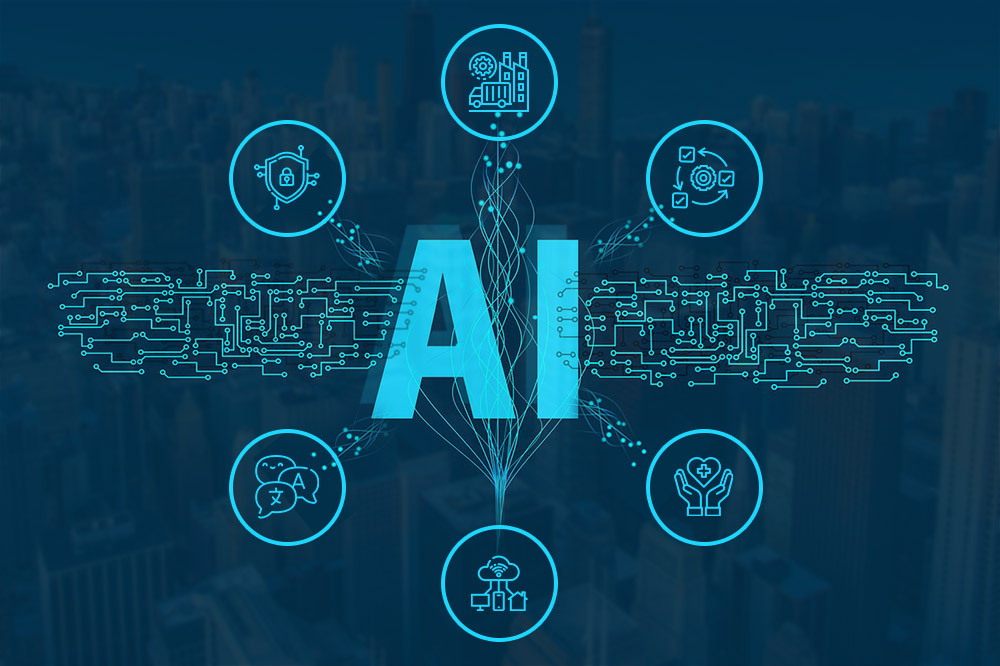Artificial Intelligence (AI) is rapidly evolving, bringing groundbreaking changes across industries. From improving healthcare to enhancing customer experiences, AI is at the forefront of technological innovation. Here are the top 10 emerging trends in AI.
1. What is Explainable AI (XAI), and why is it important?
Explainable AI (XAI) refers to AI systems that are transparent and provide explanations for their decisions. As AI becomes more embedded in critical areas like healthcare, finance, and legal systems, it’s important for these systems to explain their reasoning. This enhances trust, reduces bias, and ensures accountability in AI-driven decision-making.
2. What is AI-driven automation, and how is it changing industries?
AI-driven automation is the use of AI to automate tasks that were traditionally done by humans. From robotic process automation (RPA) in manufacturing to AI-powered chatbots in customer service, automation is increasing productivity and efficiency across industries. It’s particularly transforming sectors like logistics, retail, and finance by reducing human error and speeding up operations.
3. What role does AI play in healthcare, and what are the latest advancements?
In healthcare, AI is making strides in diagnosing diseases, personalizing treatments, and even predicting patient outcomes. Emerging trends include AI-driven medical imaging, predictive analytics for early disease detection, and AI-assisted robotic surgeries. With advancements in wearable tech, AI is also being used to monitor patients remotely, providing real-time health data and alerts.
4. How is AI influencing Natural Language Processing (NLP) and language models?
Natural Language Processing (NLP) has seen significant progress with AI-powered models like GPT-4 and BERT. These large language models are capable of understanding and generating human language with greater accuracy. Emerging trends include AI’s use in translation services, real-time transcription, and content creation. AI-powered NLP is also driving advancements in virtual assistants like Alexa, Siri, and Google Assistant.
5. What is AI in cybersecurity, and why is it critical today?
As cyber threats grow in complexity, AI in cybersecurity is becoming essential. AI helps identify patterns of malicious behavior, detect vulnerabilities, and respond to cyberattacks in real time. Emerging trends include AI-driven threat detection systems, predictive security analytics, and the use of machine learning to prevent data breaches. AI is helping organizations stay ahead of hackers by automatically defending against potential attacks.
6. How is AI transforming the field of autonomous vehicles?
AI in autonomous vehicles is a major trend, with AI-powered systems enabling self-driving cars to perceive their environment, make decisions, and navigate. Companies like Tesla, Waymo, and Uber are leading the way in autonomous vehicle development. AI is also being used in traffic management and vehicle-to-vehicle communication, improving road safety and reducing congestion.
7. What is the impact of AI on personalized customer experiences?
AI is revolutionizing customer experiences by enabling businesses to deliver personalized services at scale. AI algorithms analyze user data to predict preferences, make product recommendations, and optimize customer service. Emerging trends include AI-driven chatbots, personalized marketing, and the use of AI in creating dynamic customer journeys based on real-time data.
8. What is federated learning, and how is it enhancing data privacy in AI?
Federated learning is an AI technique that allows machine learning models to train across decentralized devices without sharing raw data. This trend is crucial for enhancing privacy in AI applications, as sensitive data (like personal or health information) remains on the user’s device. Emerging in fields like healthcare and finance, federated learning helps balance the need for AI innovation with the need for data security and privacy.
9. How is AI being used in climate change and environmental sustainability?
AI is playing a significant role in combating climate change and promoting environmental sustainability. Emerging AI trends include using AI for energy management, optimizing renewable energy sources, and improving agricultural practices to reduce waste. AI is also being applied in climate modeling, helping scientists predict and mitigate the effects of global warming more accurately.
10. What is the potential of AI in creative industries like art, music, and design?
AI is entering creative industries by helping artists, musicians, and designers explore new possibilities. AI-generated art, music composition, and even fashion design are becoming popular. Tools like OpenAI’s DALL-E and Google’s DeepDream are examples of how AI can assist in the creative process. AI is also being used to analyze consumer preferences and trends, making it a valuable tool in content creation and media production.
Conclusion
Artificial Intelligence is advancing rapidly, influencing nearly every industry. From enhancing privacy through federated learning to revolutionizing customer service with personalized experiences, AI’s potential is vast and growing. Staying informed about these emerging trends will help you stay ahead in this AI-driven world.


